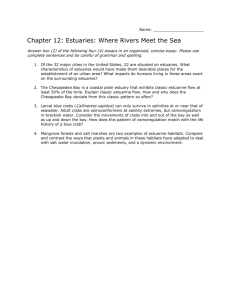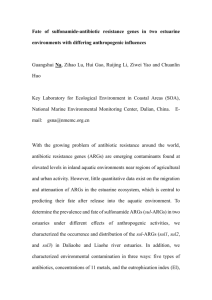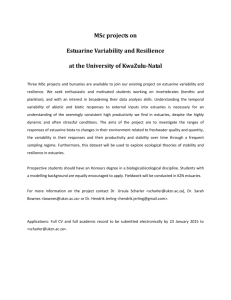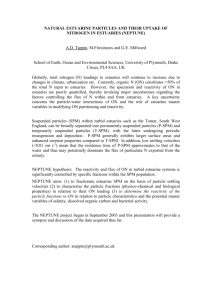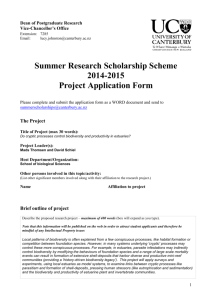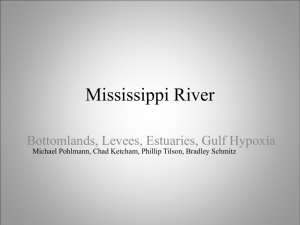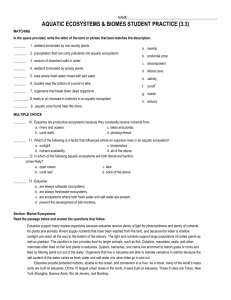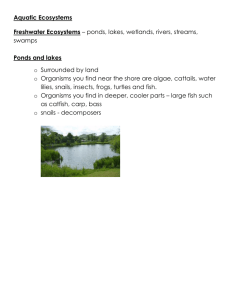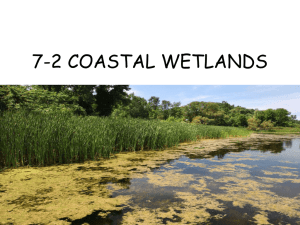Estuaries 101 - Southeast Watershed Alliance
advertisement
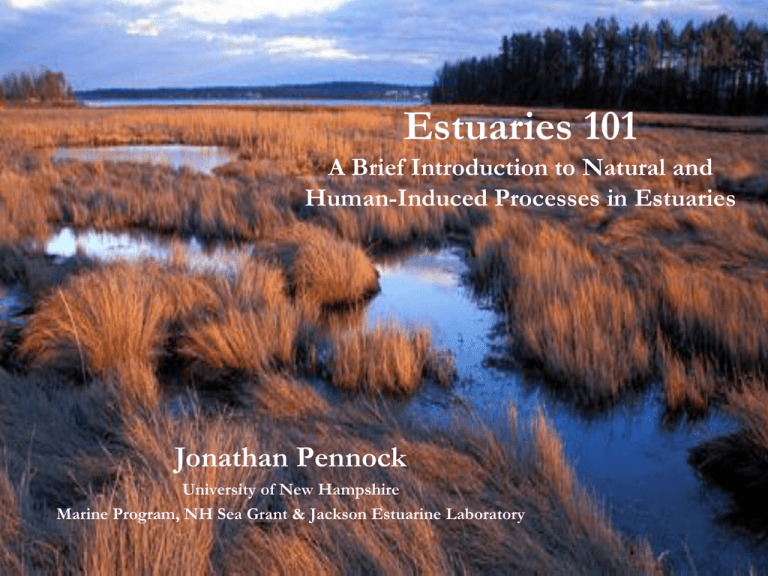
Estuaries 101 A Brief Introduction to Natural and Human-Induced Processes in Estuaries Jonathan Pennock University of New Hampshire Marine Program, NH Sea Grant & Jackson Estuarine Laboratory What Are Estuaries and Why Should We Care About Them? • Semi-enclosed bodies of water where fresh water & salt water mix… • Estuaries are critical habitats for many ecologically and economically important coastal species… • Estuaries are natural biological and geochemical reactors… • While net flow is almost always from the land to the sea, tidal influences and often two-layered flow tend to retain materials in estuaries… • In most, but not all estuaries, freshwater input from the watershed is the major source of nutrients, contaminants, suspended sediments, etc… • The sources of these inputs varies, however, with ‘point-sources’ from specified inputs and ‘non-point sources’ from varied sources such as precipitation, agriculture, septic tanks and groundwater contributing… • Different estuaries have differing capacities to cope with human perturbations based on their physical and geological make-up… What are the Most Critical Factors Impacting Estuaries? • Habitat Loss • Bacterial Contamination • Chemical Contaminants • Loss of Keystone Species • Sediment Inputs • Nutrient Over-Enrichment • Micro-algae and Macro-algae Overgrowth • Hypoxia & Anoxia NOAA Eutrophication Model Bricker 1999 Eutrophication Positive Versus Negative Effects Oligotrophic Phytoplankton Zooplankton Pelagic Fish Bottom Oxygen Benthos Benthic Fish Mesotrophic Eutrophic Dystrophic Population Increase Population (Millions) 10000 8000 World Total 6000 Europe, Russian, and The Americas 4000 Rest of Asia and Oceana China 2000 0 1700 Africa 1750 1800 1850 1900 1950 2000 2050 Year Adapted from Nixon, 1994 Land Clearing Land Clearing & Agriculture Fertilizer Production 6 Fertilizer (10 tons) 140 120 Mining of Phosphate Rock 100 80 Synthesis of Nitrogen Fertilzer 60 40 20 0 1880 1900 1920 1940 1960 1980 2000 Year Adapted from Nixon, 1994 Intensive Agriculture Point Source Inputs Headlines from Other Regions [We are Not Alone in Our Concerns…] A Case Study In Nutrient Biogeochemistry Research Mobile Bay, Alabama – Sorting Through Variability Mobile Bay Dog River Fowl River Weeks Bay Developed 24.6% 1.7% 0.8% Forested 39.7% 41.2% 29.8% Agriculture 20.3% 33.4% 59.9% Wetland 11.2% 18.5% 5.6% # # # # # # # # # # # Lower NO3 (M) Upper 25 25 25 20 20 20 15 15 15 10 10 10 5 5 5 0 0 J F M A M J J A S O N D Coastal 0 J F M A M J J A S O N D Month J F M A M J J A S O N D NOAA Estuarine Eutrophication Assessment Bricker 1999 Environmental Protection Agency Thank You!
